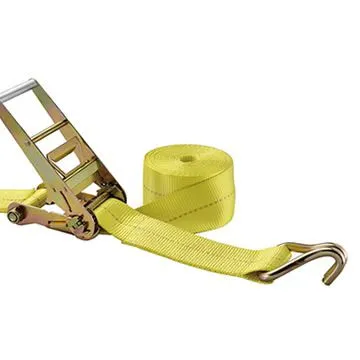- Afrikaans
- Albanian
- Amharic
- Arabic
- Armenian
- Azerbaijani
- Basque
- Belarusian
- Bengali
- Bosnian
- Bulgarian
- Catalan
- Cebuano
- Corsican
- Croatian
- Czech
- Danish
- Dutch
- English
- Esperanto
- Estonian
- French
- German
- Greek
- Hindi
- Indonesian
- irish
- Italian
- Japanese
- Korean
- Lao
- Malay
- Myanmar
- Norwegian
- Norwegian
- Polish
- Portuguese
- Romanian
- Russian
- Serbian
- Spanish
- Swedish
- Thai
- Turkish
- Ukrainian
- Uzbek
- Vietnamese
Des . 27, 2024 12:50 Back to list
mineral fiber ceiling board specification
Understanding Mineral Fiber Ceiling Board Specifications
Mineral fiber ceiling boards have gained immense popularity in commercial and residential spaces due to their excellent acoustic properties, fire resistance, and aesthetic versatility. This article delves into the key specifications of mineral fiber ceiling boards, providing insights into performance characteristics, installation considerations, and maintenance, helping architects, builders, and homeowners make informed decisions.
Composition and Structure
Mineral fiber ceiling boards are primarily composed of natural and synthetic mineral fibers. Commonly, these boards are made from materials such as fiberglass, stone wool, and cellulose, which provide excellent sound absorbency and thermal insulation. The specific mineral content can vary, impacting performance traits like durability, weight, and fire resistance. A typical mineral fiber ceiling board may comprise around 70% to 80% mineral material, while the remaining percentage includes binders and additives that enhance the board's properties.
Acoustic Performance
One of the standout features of mineral fiber ceiling boards is their acoustic performance. These boards are designed to reduce noise levels in a space, making them ideal for places like offices, schools, and auditoriums. Their Noise Reduction Coefficient (NRC) value, which typically ranges from 0.70 to 0.95, indicates the percentage of sound absorbed upon impact. A higher NRC means better sound absorption, which contributes to a quieter and more comfortable environment. When selecting a mineral fiber ceiling board, it is crucial to consider acoustic specifications based on the unique needs of the space.
Fire Resistance
Fire safety is a significant concern in any building. Mineral fiber ceiling boards are inherently fire-resistant due to their composition. Many boards achieve a Class A fire rating, which indicates they have minimal flame spread and smoke development. This makes them ideal for use in commercial buildings where fire codes are stringent. When reviewing a board's specifications, look for its fire classification according to ASTM E84 or other relevant standards to ensure compliance with safety regulations.
mineral fiber ceiling board specification

Dimensions and Weight
Mineral fiber ceiling boards come in various sizes and thicknesses, typically ranging from 2 feet by 2 feet to 2 feet by 4 feet, with thicknesses ranging from 0.5 inches to 1 inch. The weight of these boards can vary based on their density and construction, usually averaging between 0.5 to 1.5 pounds per square foot. These specifications are important for planning installation, as heavier boards may require sturdier grid systems and supportive structures.
Installation
Installation of mineral fiber ceiling boards is straightforward, often allowing for both drop-in and glued options. The standard grid systems typically used are T-bar or suspension grids, which provide flexibility in installation height and access to overhead systems. When planning the installation, it is vital to follow the manufacturer's guidelines to ensure that the boards are correctly supported, aligned, and spaced to avoid sagging and misalignment. Acoustical sealants may be recommended during installation to enhance soundproofing and moisture resistance.
Maintenance
Mineral fiber ceiling boards are relatively low-maintenance, though periodic cleaning is advised to preserve their appearance and performance. Regular dusting or vacuuming can help maintain their aesthetic appeal. In cases of stains or water damage, some boards can be cleaned or replaced individually, rather than requiring an entire ceiling overhaul. Always consult the manufacturer's care instructions for cleaning recommendations specific to your selected product.
Conclusion
In conclusion, mineral fiber ceiling boards are a highly versatile ceiling solution characterized by their excellent acoustic performance, fire resistance, and variety of design options. By understanding the specifications—composition, acoustic and fire ratings, dimensions, installation, and maintenance—individuals involved in construction and design can choose the right mineral fiber ceiling board for their projects, ensuring a safe, aesthetically pleasing, and functional space.
-
Transform Interiors with PVC Gypsum Ceiling: A Stylish, Durable, and Moisture-Resistant SolutionNewsMay.19,2025
-
The Smart Interior Upgrade: Discover the Durability and Versatility of Gypsum Ceiling Access Panel SolutionsNewsMay.19,2025
-
The Smart Choice for Interior Design: Discover the Value of PVC Gypsum Ceiling SolutionsNewsMay.19,2025
-
Mineral Fiber Ceiling Tiles: The Smart Blend of Performance and AestheticsNewsMay.19,2025
-
Mineral Fiber Ceiling Tiles: The Superior Choice Over Gypsum for Sound and Fire SafetyNewsMay.19,2025
-
Mineral Fiber Ceiling Tiles: Eco-Friendly Strength and Style for Every CeilingNewsMay.19,2025







